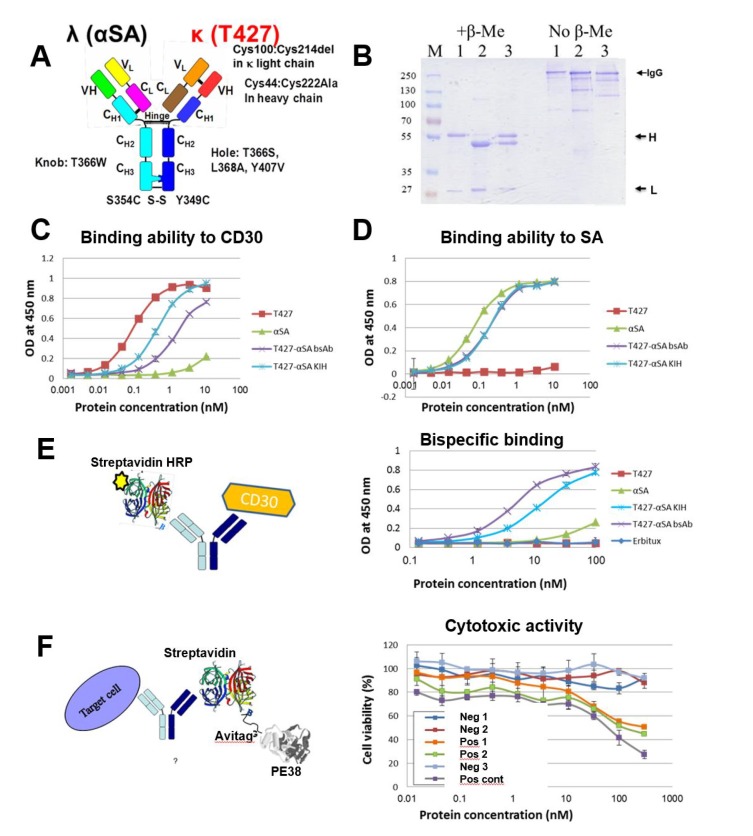Figure 7.
Characterization of refolded T427 (disulfide stabilized)-αSA bi-specific antibody. (A) The schematic structure of T427 (disulfide stabilized)-αSA bi-specific antibody. In this model, the T427 antibody (that has a κ light chain) arm was modified to carry disulfide stabilizing mutations (VH C44 and VL C100) while the αSA antibody (that has a λ light chain) arm remained unmodified at the Fab arm interface; (B) Sodium dodecyl sulfate polyacrylamide gel electrophoresis (SDS/PAGE) analysis (10% gel) of protein A purified T427 WT (1), αSA WT (2) and T427(disulfide stabilized)-αSA bsAb (3) antibodies; (C) Evaluation by ELISA of CD30 binding by the T427 (disulfide stabilized)-anti SA in comparison with WT and KIH (stabilized by KIH at the CH3-CH3 interface but unmodified at the Fab arm interface) T427 IgGs; (D) Evaluation by ELISA of SA binding by the T427 (disulfide stabilized)-αSA antibody in comparison with WT and KIH IgGs; (E) Evaluation by ELISA of simultaneous binding of both CD30 and SA by the T427 (disulfide stabilized)-αSA bsAb. The CD30 antigen was used to coat an ELISA plate, incubated with the evaluated antibodies and binding was detected using horseradish peroxidase (HRP) conjugated streptavidin; (F) Evaluation of T427 κ (disulfide stabilized)-αSA bispecificity by recruiting an effector function (cytotoxic activity) to target cells. Neg 1: T427 mAb mixed with αSA mAb and with SA and biotinylated Avitag-PE38; Neg 2: αSA mAb and with SA and biotinylated Avitag-PE38; Pos 1:T427/αSA bsAb with SA and biotinylated Avitag-PE38; Pos 2: T427/αSA bsAB (KIH only) with SA and biotinylated Avitag-PE38; Neg 3: SA and biotinylated Avitag-PE38 (no antibody present); Pos cont: A T427 IgG-PE38 fusion protein as positive control. Cytotoxicity was evaluated using an MTT assay. The evaluated antibodies were mixed with a streptavidin-PE38 complex and added to A431/CD30 cell line. Streptavidin-PE38 complex served as a control for non-specific toxic effect. T427-di-PE38 immunotoxin [17] served as a positive control.

